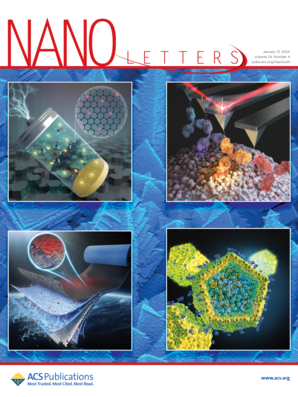Electrical Control of Polariton Josephson Junctions via Exciton Stark Effect
IF 9.6
1区 材料科学
Q1 CHEMISTRY, MULTIDISCIPLINARY
引用次数: 0
Abstract
We propose harnessing the tools of modern nanofabrication to provide electrical control of exciton–polariton (EP) condensates. We develop the theory of a device based on the Josephson effect in which electric fields can be used to both switch between and monitor various dynamical modes. In particular, both the bias potential and the Josephson energy can be tuned electrically via the exciton component. We model the device by a Gross–Pitaevskii equation assuming that ideal EP condensates are established with well-balanced pumping and dissipation. We find that the EP condensates can be manipulated through degrees of freedom not easily accessible in other coherent quantum systems, and the dynamics of EP Josephson junctions are richer than that of the conventional superconducting junctions. The ability to control and monitor the condensate by both optical and electrical means allows new ways to study its physics not possible by either, alone.

通过激子斯塔克效应实现极化子约瑟夫森结的电气控制
我们建议利用现代纳米制造工具来提供激子-极化子(EP)凝聚物的电气控制。我们发展了一种基于约瑟夫森效应的装置理论,其中电场可以用来在各种动态模式之间切换和监测。特别是,偏置电位和约瑟夫森能都可以通过激子分量进行电调谐。我们用Gross-Pitaevskii方程对该装置进行了建模,假设理想的EP凝聚体具有良好的泵送和耗散平衡。我们发现EP凝聚体可以通过在其他相干量子系统中不易获得的自由度进行操作,并且EP Josephson结的动力学比传统超导结的动力学更丰富。通过光和电两种手段控制和监测冷凝物的能力,使研究其物理特性的新方法成为可能,这两种方法都无法单独实现。
本文章由计算机程序翻译,如有差异,请以英文原文为准。
求助全文
约1分钟内获得全文
求助全文
来源期刊

Nano Letters
工程技术-材料科学:综合
CiteScore
16.80
自引率
2.80%
发文量
1182
审稿时长
1.4 months
期刊介绍:
Nano Letters serves as a dynamic platform for promptly disseminating original results in fundamental, applied, and emerging research across all facets of nanoscience and nanotechnology. A pivotal criterion for inclusion within Nano Letters is the convergence of at least two different areas or disciplines, ensuring a rich interdisciplinary scope. The journal is dedicated to fostering exploration in diverse areas, including:
- Experimental and theoretical findings on physical, chemical, and biological phenomena at the nanoscale
- Synthesis, characterization, and processing of organic, inorganic, polymer, and hybrid nanomaterials through physical, chemical, and biological methodologies
- Modeling and simulation of synthetic, assembly, and interaction processes
- Realization of integrated nanostructures and nano-engineered devices exhibiting advanced performance
- Applications of nanoscale materials in living and environmental systems
Nano Letters is committed to advancing and showcasing groundbreaking research that intersects various domains, fostering innovation and collaboration in the ever-evolving field of nanoscience and nanotechnology.
 求助内容:
求助内容: 应助结果提醒方式:
应助结果提醒方式:


